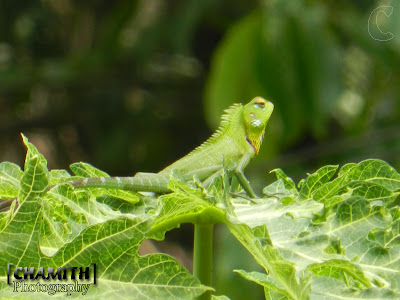Meemure is a village in Sri Lanka with a population of about 400.It is located near the border between Kandy District and Matale District in the Knuckles Mountain Range. Meemure is one of the most remote villages in Sri Lanka with the only access via a 14 km (8.7 mi) trail from the town of Loolwatte.There is no cellular service available in the village, but a CDMA telephone service is available. There is no direct mail delivery to the village.A villager journeys each day to Thapal Junction (literally meaning Mail Junction) to exchange incoming and outgoing postal mail with a postman.
Lakegala mountain is in Meemure village. It is considered the place where King Ravana lifted the Dhadu Monara or Dhandu Monara. Residents of the village depend on several staple crops including pepper, cardamom, paddy and ginger.Meemure village owns an exceptional natural beauty. It is rich with natural Beauty and Traditional Sri Lankan styles. The distance from Colombo capital to Meemure is about 175 km.
Route
Meemure is approximately a 6 hour drive from Colombo, in an off road vehicle. Here is how you can go there; First go to Kandy city which is 116 km away from Colombo. Then Kandy-Mahiyangana Road (A26) towards to Mahiyangana. Turn to Left from Hunnasgiriya Junction which is 35 km away from Kandy. Then go towards the Loolwatte Village which is 15 km away from Hunnasiriya Junction. Then from Loolwatte it is about another 15 km to the Meemure Village. On your way to Meemure from Colombo you can see many Natural Sceeneries; among them Hulu Ganga (River), Victoria Reservoir, Teldeniya New Town (Teldeniya was flooded in filling the Reservoir behind the Victoria Dam, Mahaweli Project), Dothalugala Forest and Botanical Garden, Mini Worlds End, Coberts Gap (Attala Mottuwa) a place where lot of wind blowing to the other side, Meemure and Lakegala Mountain where King Rawana Lifted his Air Plane called Dhadu Monara.Also you can visit and have bath from a water fall and a stream. This is the place where Sri Lankan Film “Suriya Arana” Shooting. You can have climb to the Lakegala Mountain also which is full of Adventure. If you are Local Alcohol lover you can have “Ra,” local toddy made of Kithul Tree.
Pictures
Paddy fields in Meemure
People in Meemure
People in Meemure
Paddy fields in Meemure
Paddy fields in Meemure
Houses in Meemure
Roads in Meemure











































.jpg)
.jpg)
.jpg)
.jpg)
.jpg)
.jpg)
.jpg)
.jpg)
.jpg)
.jpg)
.jpg)
.jpg)
.jpg)
.jpg)
.jpg)
.jpg)
.jpg)
.jpg)
.jpg)
.jpg)
.jpg)
.jpg)
.jpg)
.jpg)
.jpg)
.jpg)
.jpg)
.jpg)
.jpg)
.jpg)
.jpg)
.jpg)
.jpg)


